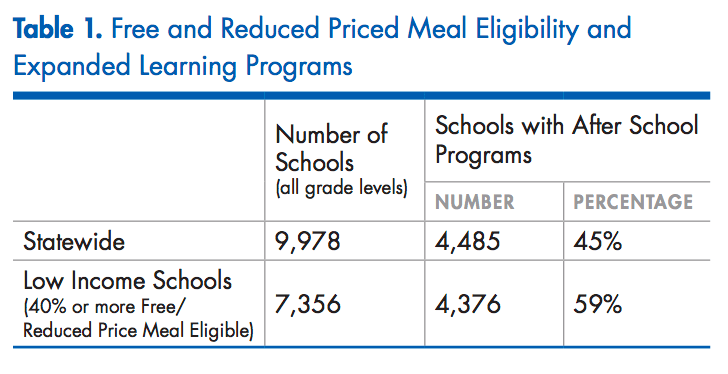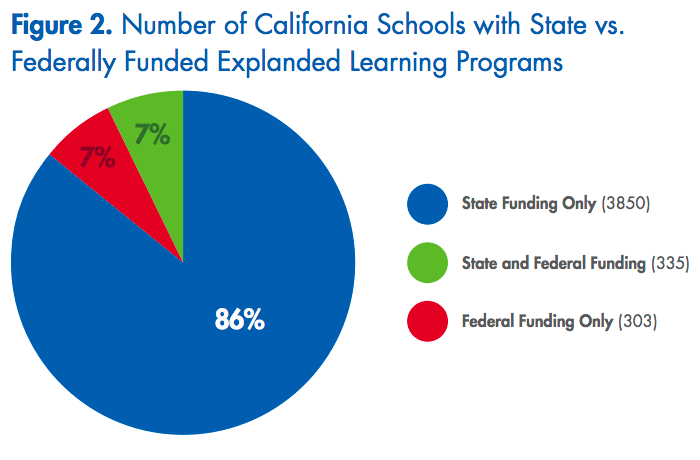Should We Cut After-School Programs?

After-school programs are on the cutting block in the President's recently announced federal budget proposal. Even in California, these programs are at risk.
Should they be cut? What will happen in your community? These are important questions to ask parents at your school. Now is the time for a discussion, because budget decisions are being made.
Where Does the Money Come From?
Nearly half of California schools receive government funding for before- and after-school school programs. These funds also can support summer school.
The money comes from two main sources:
- The state, through California's After School and Education Safety (ASES) program.
- The federal government, especially through the 21st Century Learning Centers program.
These programs target low-income students.
In addition to the programs above, many communities provide their own after-school and summer programs. But local capacity to fund them varies a lot.
Federal and State Programs in Peril
The President's budget proposal would cut $1.2 billion in federal funding for after-school and summer programs that serve nearly 1.6 million children, mostly poor. There is growing opposition to this proposal.
The news is not good for state funding of after-school and summer programs in California, either.
In 2002, California voters approved Proposition 49 to provide after-school education and enrichment programs for children in kindergarten through 9th grade. This is the proposal that propelled Arnold Schwarzenegger into California politics.
Fast forward to today. Funding for these after-school programs has been stagnant for a decade. Operating costs have not remained stagnant; they have risen with increased minimum wage standards and state-mandated paid sick leave.
Efforts are underway in Sacramento to increase funding. Citing the possibility that 67,000 students could potentially lose access to after-school programs, Senator Leyva has introduced SB 78 to protect these programs. A similar effort last year was not successful.
Do These Programs Help Kids and Families?
In justifying the cuts, the White House says these programs don't work, but research says otherwise. For example, see "Fifteen Years of Evaluation of 21st Century Community Learning Centers" and the AfterSchool Alliance compilation of research.
For today's families, the workday does not end at 3 pm. The AfterSchool Alliance, a nonprofit organization, argues that these programs are increasingly essential for both children and families. According to a recent summary of research assembled by the Alliance, "more than 8 in 10 parents (83 percent) of children in after-school programs agree that after-school programs help working parents keep their jobs."
You can find more information about after-school and summer programs on Ed100.org.
Is your school struggling to provide after-school and summer programs? What are you doing about it?
Tags on this post
After school Budgets SummerAll Tags
A-G requirements Absences Accountability Accreditation Achievement gap Administrators After school Algebra API Arts Assessment At-risk students Attendance Beacon links Bilingual education Bonds Brain Brown Act Budgets Bullying Burbank Business Career Carol Dweck Categorical funds Catholic schools Certification CHAMP Change Character Education Chart Charter schools Civics Class size CMOs Collective bargaining College Common core Community schools Contest Continuous Improvement Cost of education Counselors Creativity Crossword CSBA CTA Dashboard Data Dialogue District boundaries Districts Diversity Drawing DREAM Act Dyslexia EACH Early childhood Economic growth EdPrezi EdSource EdTech Education foundations Effort Election English learners Equity ESSA Ethnic studies Ethnic studies Evaluation rubric Expanded Learning Facilities Fake News Federal Federal policy Funding Gifted Graduation rates Grit Health Help Wanted History Home schools Homeless students Homework Hours of opportunity Humanities Independence Day Indignation Infrastructure Initiatives International Jargon Khan Academy Kindergarten LCAP LCFF Leaderboard Leadership Learning Litigation Lobbyists Local control Local funding Local governance Lottery Magnet schools Map Math Media Mental Health Mindfulness Mindset Myth Myths NAEP National comparisons NCLB Nutrition Pandemic Parcel taxes Parent Engagement Parent Leader Guide Parents peanut butter Pedagogy Pensions personalized Philanthropy PISA Planning Policy Politics population Poverty Preschool Prezi Private schools Prize Project-based learning Prop 13 Prop 98 Property taxes PTA Purpose of education puzzle Quality Race Rating Schools Reading Recruiting teachers Reform Religious education Religious schools Research Retaining teachers Rigor School board School choice School Climate School Closures Science Serrano vs Priest Sex Ed Site Map Sleep Social-emotional learning Song Special ed Spending SPSA Standards Strike STRS Student motivation Student voice Success Suicide Summer Superintendent Suspensions Talent Teacher pay Teacher shortage Teachers Technology Technology in education Template Test scores Tests Time in school Time on task Trump Undocumented Unions Universal education Vaccination Values Vaping Video Volunteering Volunteers Vote Vouchers Winners Year in ReviewSharing is caring!
Password Reset
Search all lesson and blog content here.
Login with Email
We will send your Login Link to your email
address. Click on the link and you will be
logged into Ed100. No more passwords to
remember!
















Questions & Comments
To comment or reply, please sign in .